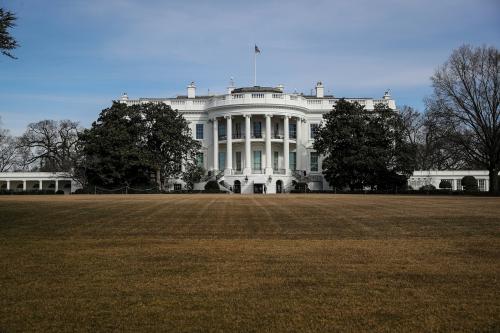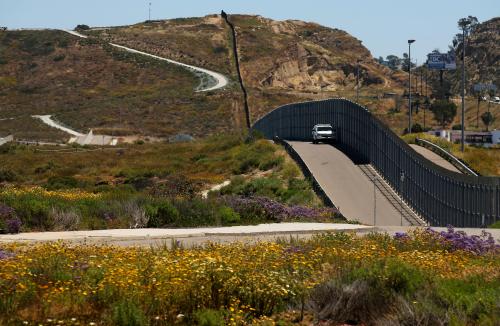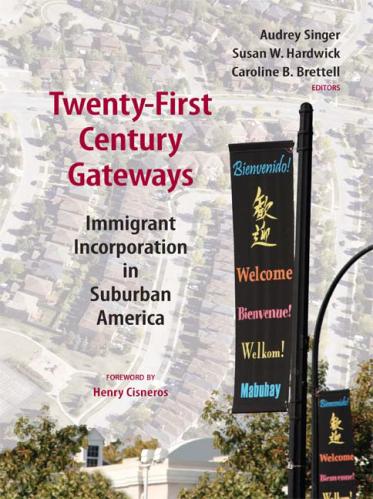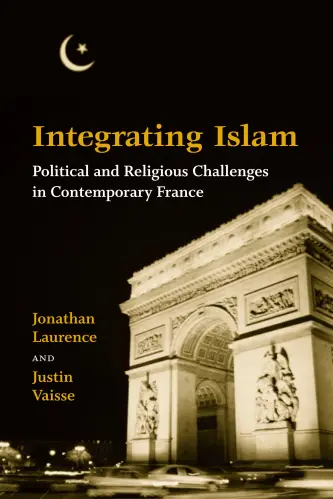A few weeks ago, President Trump tweeted that he was “giving strong considerations” to placing “illegal immigrants in Sanctuary Cities only.” As with many of Mr. Trump’s tweets, the lawyers stepped in to kill the idea and although he offered it again to no avail, it seems to have been replaced with a new idea: make asylum-seekers pay a processing fee. This too seems destined to go nowhere, given that most asylum-seekers have little money, but it is part and parcel of the president’s approach to immigration, an issue on which he has always maintained a tenuous relationship to reality.
This started, of course, way back in the campaign when he asserted time and time again the highly unlikely proposition that Mexico would pay for the wall. Along the way, the data show that there have been many similar detours into fantasy. He has said often that those seeking to come to the United States contain a disproportionate number of “gang members, drug dealers, human traffickers and criminal of all shapes, sizes and kinds,” a characterization that is particularly untrue for asylum-seekers. In Trump’s view, sending immigrants to sanctuary cities is a way to punish those Democrats unwilling to “change our very dangerous immigration laws.” In the president’s eyes, because illegal immigration is so appalling to him, it must be appalling to everyone, and the transfer of refugees seeking asylum to sanctuary cities will turn voters against pro-immigration reform Democrats.
The president’s aborted plan for sanctuary cities is emblematic of everything that is wrong with his approach to immigration. Even if the claim that a disproportionate number of immigrants are criminals were true (it is not), the obvious problem with his plan is that there is nothing to guarantee that all these “bad actors” would stay in these Democratic strongholds. Once there, they might just move to places where large proportions of Trump voters and supporters live, and data the Washington Post obtained on a small sample of recent immigrants shows that occurring.
The second problem with this plan is a legal one that has implications far beyond immigration. The federal government cannot act in ways that help one political party over another. The biggest legal barrier is in the Hatch Act, the law that forbids federal employees from engaging in several behaviors, including taking official actions for the purposes of political or partisan activity. While this does not apply to the president, the hundreds of government employees who would be involved in implementing the strategy to transfer immigrants to liberal Democratic communities would be violating the Hatch Act. Think of it this way: what if a Democratic president decided that Republican states who had voted against him or her on the basis of opposition to welfare programs should not get food stamps. There would obviously be howls of opposition if deep-red states were systematically deprived of federal funds, raising concerns about political abuse of power and a subjugation of Congressional intent in appropriations.
But finally, in pushing this argument Mr. Trump forces us to look at the actual numbers involved in his “crisis.” We don’t really know to whom the president refers to when he suggests releasing “illegal immigrants” into these communities. Does he mean everyone in ICE detention, including those who have committed crimes in the U.S. or their countries or origin? Surely not. Does he mean those for whom the U.S. government is expediting removal? Perhaps, but it would be an option sub-optimal to the president’s preferences. He could mean those who have sought asylum in the U.S.—a practice the president claims is being regularly abused by those not legitimately eligible.
There are a few statistics about the number of asylum-seekers that help estimate the hypothetical impact of this idea. Last fiscal year, there were 99,035 asylum requests. The same data for FY 2019 are not yet available, but we can look at the flow of families across the southern border. These families mostly come from the Northern Triangle in Central America and are fleeing with the hope of being granted asylum in the United States. All types of border apprehensions have increased to some degree this year, but families, most of whom are seeking asylum, have risen the most dramatically. As of the halfway mark of the fiscal year, 190,000 people have been apprehended in family units—almost a four-fold increase over last year. They currently make up the majority of all border apprehensions.
What would be the impact of relocating those asylum-seekers? There are eight states that have designated themselves sanctuary states (California, Colorado, Illinois, Massachusetts, New Jersey, New Mexico, Oregon, and Vermont) totaling a population of 80.23 million. In addition, there are another 87 counties and municipalities outside of those eight states that have designated themselves sanctuary jurisdictions, with a population totaling 39.71 million. Thus, the total population living in areas designated as sanctuary jurisdictions totals 119.94 million people.
The president believes the transfer of asylum-seekers to sanctuary jurisdictions would put such an undue burden on those local governments and populations that the people would rise up against their governments’ embrace of sanctuary status. In reality, however, as Table 1 shows, all families apprehended so far this year total an equivalent of 0.16 percent of the population of those sanctuary jurisdictions. Put differently, if those asylum-seekers were spread across sanctuary jurisdictions according to population, those jurisdictions would receive 16 asylum-seekers per 10,000 residents.
|
|
Apprehensions |
% of Sanctuary Jurisdiction Population |
Individuals Per 10,000 Sanctuary Jurisdiction Residents |
|
Individuals apprehended in families, FY 2019 |
189,584 |
0.158% |
15.8 |
Note: Apprehensions are those reported by CBP for FY 2019 from October through March. Includes all individuals apprehended as part of a family unit. Based on a total sanctuary jurisdiction population of 119,939,547. Sources: U.S. Customs and Border Protection, Center for Immigration Studies, U.S. Census Bureau
Such low numbers put a damper on the president’s claims both that the inflow of people is unmanageable and that asylum-seekers would put drastic strains on government. And we also know that asylum-seekers are not unproductive drains on local economies. In 2017, researchers in the Department of Health and Human Services conducted an analysis of the economic impact of refugees, a very similar population to asylum-seekers. They found that in a 10-year period, they contributed $63 billion more in government revenues than they cost. The Trump administration rejected the report, the conclusions of which were based upon a model used by both Republican and Democratic administrations. Depending on their age when they arrive, the researchers found that refugees start contributing more to the government than the cost of the services they use after five years of residence in the United States.
President Trump’s ideas about relocating immigrants depend on a misunderstanding (perhaps deliberate) of the levels of immigration, the composition of those seeking to come to the United States (and particularly those seeking asylum), the impact of relocation on sanctuary jurisdictions, and the legal basis for his ongoing policy-proposal-by-tweet. Many of the mayors and governors who have declared sanctuary status for their jurisdictions, have effectively said “bring it on.” And why shouldn’t they? The president is offering to send them a host of new, productive economic actors.
The crisis at the border is easily solved. In the short term, DHS should beef up the federal workforce at the border to adjudicate the cases of asylum-seekers and either accept them or send them back in a short period of time. In the longer term, the United States should use its power and influence in Central America to help stem the tide of violence and poverty that is causing so many people to flee. But common sense has no place in Mr. Trump’s approach to this problem. For him, illegal immigration is an existential threat to the United States, a danger that he feels free to describe in racist terms. It occupies an outsized place in his psyche and in the minds of his followers. And ironically, his obsession keeps him from actually solving the problem.












Commentary
Trump threatened sanctuary cities, and they shrugged—here’s why
May 1, 2019